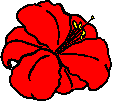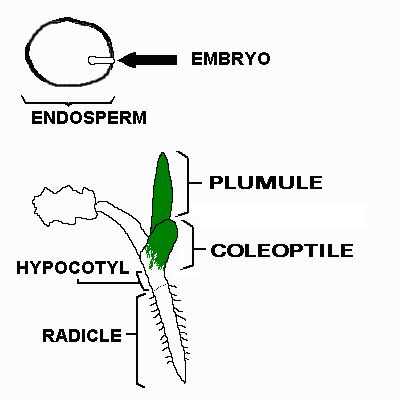|
| Orders: 1-866-449-3344 Toll-free |
|
| International: ++1-317-867-3344 |
 Shields
Gardens
Ltd.
Shields
Gardens
Ltd.
The fleshy seeds of many Amaryllids germinate without a period of dormancy. Many who deal with them have trouble sorting out the anatomical structures of the germinating seeds and the very young seedlings. The following is based on discussions in the on-line members' forums of the International Bulb Society, the Pacific Bulb Society, and Ken Smith of the Clivia Society. Errors are purely my own.

The large, fleshy seeds of certain genera of the Amaryllidaceae are largely made up of endosperm. The embryo is a very small part of the overall seed. In the Clivia, one can easily see where the embryo penetrates the surface of the seed.
In monocots, there is only one cotyledon, and it remains mostly inside the seed. When a monocot seed germinates, the first structure that emerges from the seed is the petiole of that leaf, or the cotyledon petiole.
As the cotyledon petiole elongates, its tip eventually differentiates into the hypocotyl, which in turn develops into the radicle or first root. At the point where cotyledon meets hypocotyl, the future bulb plate will form. At this point also, part of the tissue differentiates into the epicotyl, the site of the apical meristem, where the plumule or first true leaf of the new seedling forms. The sheath enclosing the epicotyl is the coleoptile, similar to that found in greminating grasses.
Genera of the Amaryllidaceae which typically have these fleshy seeds include Amaryllis, Ammocharis, Brunsvigia, Clivia, Crinum, Haemanthus, Hymenocallis, Nerine, and Scadoxus. The genera Cyrtanthus, Hippeastrum ("amaryllis" of commerce), Rhodophiala, Sprekelia, Worsleya, and Zephyranthes have much smaller endosperms which are encased in a thin, papery black membrane that extends beyond the edges of the endosperm and that probably facilitates dispersal of the seeds by wind.
For a very good explanation of these matters, see John Gyer's excellent web page at: http://trilliumresearch.org/your_trillium_studies/ys_01_john_gyer.htm which is in Harold Holmes's fine web site.
Jim Shields
|
| Orders: 1-866-449-3344 Toll-free |
|
| International: ++1-317-867-3344 |
For information about this account, contact:
James E. Shields, <jim@shieldsgardens.com>, webmaster
Last revised: 21 January 2010
© Copyright 2006, 2010 by SHIELDS GARDENS LTD. All rights reserved.
Hosted by PowWeb.